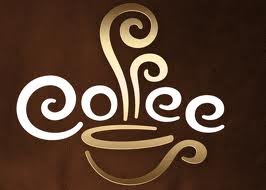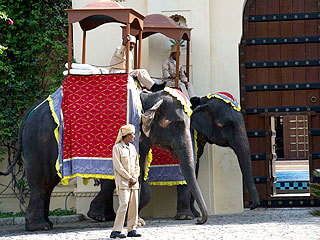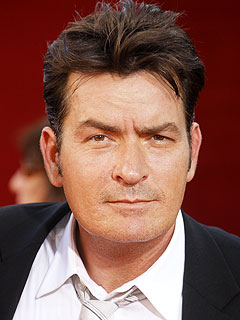Keith Richards has been the subject of many lurid rumors; most of them turn out to be understatements. But a few days ago the website Worst Previews ran the oddest bit of gossip: that the Disney Company was considering axing the Rolling Stone guitarist from playing Captain Teague in the fourth
, reveals that he has used drugs. He
Somebody call the cops and arrest this man! (Sorry, that's been done, over and over.) And, Disney, don't think of replacing Richards with Elton John: we've heard he's gay. Or with Mick Jagger: why, the man has slept with women to whom he wasn't married.
For all the groupies who pressed their attentions on the rock star, heroin was often his true muse. "They don't call it heroin for nothing. It's a seductress." In the '70s, during Richards' deepest addiction, his need for hypodermics inspired some truly creative criminality: "When I traveled [to the U.S.] I would wear a hat and use a needle to fix a little feather to the hatband, so it was just a hat pin." But where to find a clean syringe in New York City? "I'd go down to FAO Schwarz, the toy shop right across Fifth Avenue from the Plaza. And if you went to the third floor, you could buy a doctor and nurse play set, a little plastic box with a red cross on it. That had the barrel and the syringe that fitted the needle that I'd brought. I'd go round, 'I'll have three teddy bears, I'll have that remote-control car, oh, and give me two doctor and nurse kits!'"
The Evel Knievel of illicit substances, Richards wears his 66 years with a jaunty gauntness. Sinewy and haggard, he could be the poster child for a "This is your face on drugs" campaign; or he might just be a grizzled coal miner who was never allowed to come up for daylight. The grimacing skull ring he wears on the fourth finger of his right hand could be a self-portrait; sometimes, throughout whole decades, it's looked more life-like than he has. Even playing live, thrumming the intro to "(I Can't Get No) Satisfaction" that came to him in his sleep 45 years ago, he can seem the coolest extra in
. He still plays up a storm onstage — including when a lump of white phosphorous from a fireworks display burned through his finger and he kept on performing ("I'm watching white bone for the next two hours") — yet he leaves not just the strutting showmanship but most of the talking to Jagger. Have the drugs left him incommunicado?
If Richards' aspect and affect suggest a dull mind, then that is the sneakiest of his subversions. Anyone who opens the 564-page
Life expecting an addled, one-note memoir — a print version of the world's longest guitar solo — will get a liberating surprise. The book is a vivid self-portrait and, of the Stones and their musical era, a grand group portrait. Surely thanks in part to his cowriter James Fox, Richards shows a strong, sure authorial voice, acute in detail, passionate about his achievements in music and nearly always amused by his excesses, not least in having survived them. "This is the Life," he writes in his own hand on the book's inside flap. "Believe it or not I haven't forgotten any of it."
The only son of Bert Richards, a factory worker, and his wife Doris, Keith was born Dec. 18, 1943, in the London suburb of Dartford, which he describes as a centuries-old refuge for thieves. ("If somebody's got a nice pair of diamond somethings, you never ask, 'Where did they come from?'") Campers in their youth, Bert and Doris took the boy on hiking trips; as a teen he became a devout, proficient Boy Scout. Keith's paternal grandfather was a gardener by trade, a socialist by choice; the boy's maternal grandfather, Gus Dupree, was the leader of a jazz band. "God bless him — I owe so much of my love for music to him," Richards recalls with unabashed affection. "I write him notes frequently and pin them up. 'Thanks, Granddad.'" Gus introduced Keith to the guitar; Doris introduced his ear to Billie Holiday and Duke Ellington. "When songs came on the radio, we'd all start harmonizing. A load of singers." On a weak signal from Radio Luxembourg, he heard the music that would change his life: Elvis Presley singing "Heartbreak Hotel." When he was 15, Doris bought him a guitar. "I took it everywhere and went to sleep with my arm laid across it."
See the 100 best albums of all time. In middle school, Keith had been one of three boy sopranos chosen to perform at Westminster Abbey; when he returned he found that he was to held back a grade because he'd missed classes to practice. He considered this a betrayal, and thus was turned "from a reasonably compliant student into a school terrorist and criminal, with a lively and lasting rage against authority." His attitude soured, his grades sank, and when he was expelled from Dartford Technical School for truancy, his headmaster advised him to try art school in the nearby town of Sidcup, where he spent most of his time immersing himself in the traditional blues of Howlin' Wolf and Muddy Waters. On a train he saw Mick Jagger, who had lived near him years before, and now owned some Muddy Waters and Chuck Berry albums. The two started jamming, aligned with Brian Jones and two other young musicians, formed the Rolling Stones and moved from the suburbs into town.
The London Stones came together just as their Liverpool cousins, the Beatles, were soaring to the top of the charts. The Stones' manager, Andrew Loog Oldham, proposed that they be "the anti-Beatles": not just playing rhythm and blues instead of pop rock, but jettisoning the starchy uniforms for rehearsal wear, and replacing the Fab Four's cuddly, even-Mum-likes-them image for a highwayman vibe that was both surly (Keith) and explicitly sexual (Mick). There would be two other differences: the four Beatles were together for eight years, the Stones now for 48; and though the Beatles made the better music, the Stones were unquestionably the more — the century's most — influential rock band. The Stones set the mold for the testosteronic bad-boy bands of the next 40 years; they made outlawry in. It was they who promoted strength and volume over the Beatles' angelic harmonies; who cemented the notion of the lead singer, unencumbered by guitar, as the focus of theatrical attention; who established the live performance, not the studio recording, as the genre's organic expression. As Richards told some kids while on a recent visit to Dartford, "Whatever you're listening to now, it wouldn't have been there without me."
(See The Rolling Stones 1969 American Tour.) 
With fame came the screaming girls on the streets, in the hotel rooms, at the concerts. "Amongst the many thousands," Richards recalls, "a few got hurt, and a few died.� But the limp and fainted bodies going by us after the first ten minutes of playing, that happened every night. Or sometimes they'd stack them up on the side of the stage because there were so many of them. It was like the western front." Instead of roses, the young ladies threw their panties. "I remember walking back out onto the stage after the show, and they'd cleaned up all the underwear and everything, and there was one old janitor ... and he said, 'Very good show. Not a dry seat in the house.'"
Richards believes that the Stones' popularity and up-yours demeanor made them the "focal point of a nervous establishment� They had to leave the Beatles alone because they'd already given them medals. We got the nail." (In fact, the Beatles were susceptible to drug busts too.) But the two groups held no animosity for each other. "We were a mutual-admiration society," Richards writes. "Mick and I admired their harmonies and their songwriting capabilities, they envied us our freedom of movement and our image." In the post-Beatles era, Richards spent time with John Lennon, whom he affectionately calls "a silly sod in many ways" and who was no match for grandmaster Keith in consuming drugs. "He'd try and take anything I took, but without my good training�. And John would inevitably end up in my john, hugging the porcelain." Recently, Richards has shared long, warm chats on the beach of his island retreat in the Turks and Caicos Island with the Beatles' least Stonesian member, Paul McCartney.
THROWING STONES
To Jagger, Richards is less generous. He seems to believe that, since he's willing to bare all, his bandmates shouldn't mind being depantsed. Literally. He refers to Jagger's phallus as "the tiny todger. I know he's got an enormous pair of balls, but it doesn't quite fill the gap, does it?" In the '60s, actress Anita Pallenberg, whom Keith had "stolen" from Brian, cheated on Keith with Mick; Keith retaliated by having a fling with Mick's girl, singer Marianne Faithfull. ("[W]hile you were doing that, I was knocking Marianne, man. While you're missing it, I'm kissing it.") Richards portrays himself as often renting out his shoulder for Jagger women — Chrissie Shrimpton, Jerry Hall, Bianca Jagger — to cry on when they were sexually betrayed, and declares he never came on to any woman. "I'm not Bill Wyman or Mick Jagger, noting down how many I've had," he writes. "I'm not talking about shagging here. I've never been able to go to bed with a woman just for sex. I've no interest in that. I want to hug you and kiss you and make you feel good and protect you. And get a nice note the next day, stay in touch."
To judge from the book, the Jagger-Richards tandem is the world's longest functioning bad marriage. "Mick was very jealous of me having other male friends." "Mick doesn't like to trust anybody." Some remarks sound like insult comedy Keith has been nursing for decades. Of She's the Boss, Jagger's 1985 solo album, he says, "It's like Mein Kampf. Everybody had a copy, but nobody listened to it." Even a compliment about Jagger's harmonica virtuosity — "Mick is one of the best natural blues harp players I've ever heard" — quickly curdles: "His harp playing is the one place where you don't hear any calculation. I say, 'Why don't you sing like that?'"
Yet they stick together. Rather, every few years these ornery business partners convene to cut a record or embark on a tour. After the 1969 Altamont concert in California, resulting in one murder and three accidental deaths ("I was amazed that things didn't go more wrong than they did"), the group took control of their own concerts and scheduled megatours, which Richards calls "the bread and butter of keeping this machinery running. We couldn't have done it on a smaller scale and been sure to do more than break even." On the 1972 STP tour, traveling North America in a private jet with the Stones' emblematic tongue painted on the side, "We had become a pirate nation, moving on a huge scale under our own flag, with lawyers, clowns, and attendants." That tour was to promote their superb double album
Exile on Main Street. Since then, Stones' tours have become a showcase for oldies: the classic numbers and the energetic antiques who play them.
(Top 10 Music-Festival Moments: The Rolling Stones at Altamont — 1969.) Confessional autobiographies, unless they're by William Boroughs, tend to inspirational endings: salvation through strong will or a good woman. Life has both. In 1979 Richards kicked heroin with the help of his manager, Jane Rose; she "got me through the seventy-two hours [of withdrawal]. She watched me climb the walls, which is why I don't like wallpaper anymore." The same year he met Patti Hansen, a Vogue cover girl from Staten Island, N.Y. As he wrote in a journal soon after they met: "Incredibly I've found a woman. A miracle!� I'm over the moon and peeing in my pants.... I'm kicking 40 and besotted." Richards and Hansen, who were married in 1983, have two daughters. (With Pallenberg he sired three children, one of whom died in infancy.) After his famous 2006 fall from a tree in Fiji, he was advised to kick the cocaine habit, and did. "Actually," he writes, "I've done so much bloody blow in my life, I don't miss it an inch. I think it gave me up."
So now he's a happy family man with mansions in three countries. Disney, take note. Maybe this Captain Hook of rock 'n' roll will not be appearing in Pirates of the Caribbean: On Stranger Tides. But given the engaging prose style and spellbinding story-telling on display in Life, Keith Richards really should be hired to write the script.
— With reporting by Nathaniel Jones and Mackenzie Schmidt






















